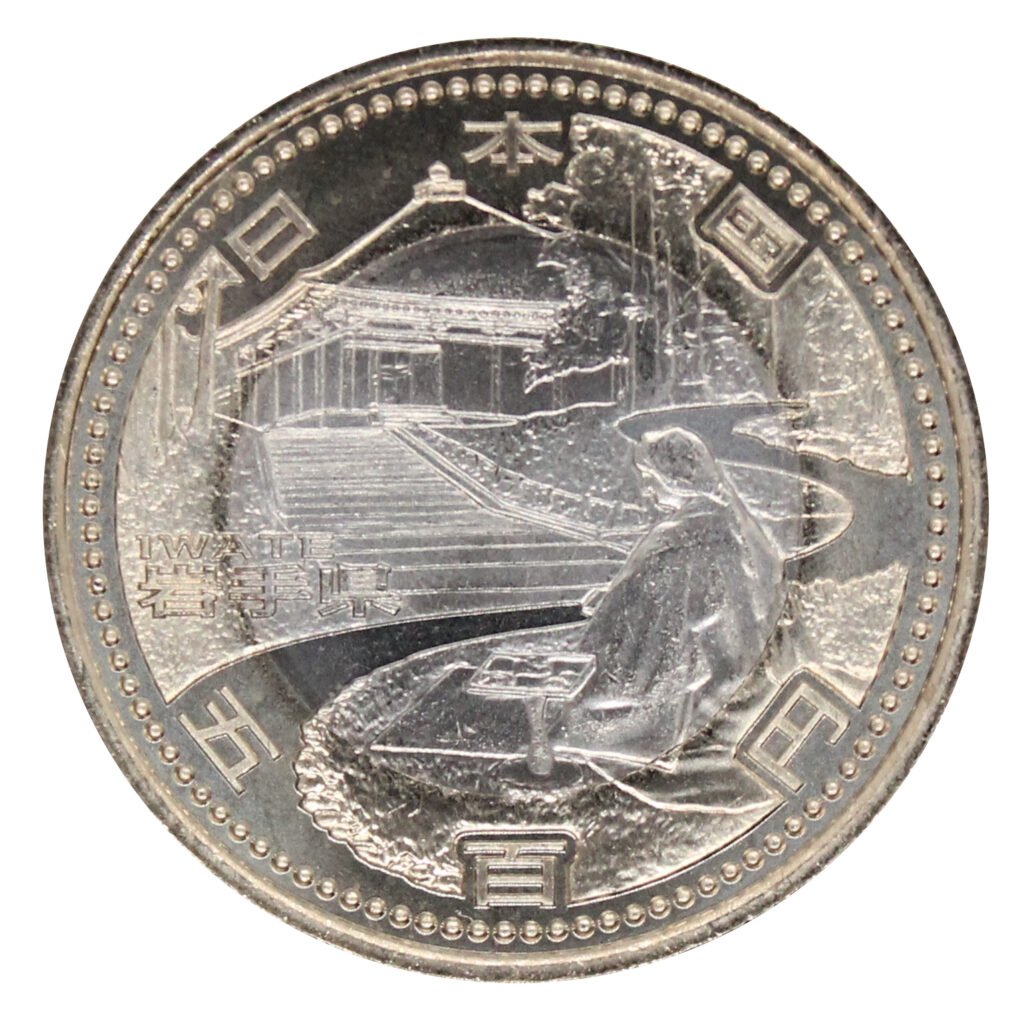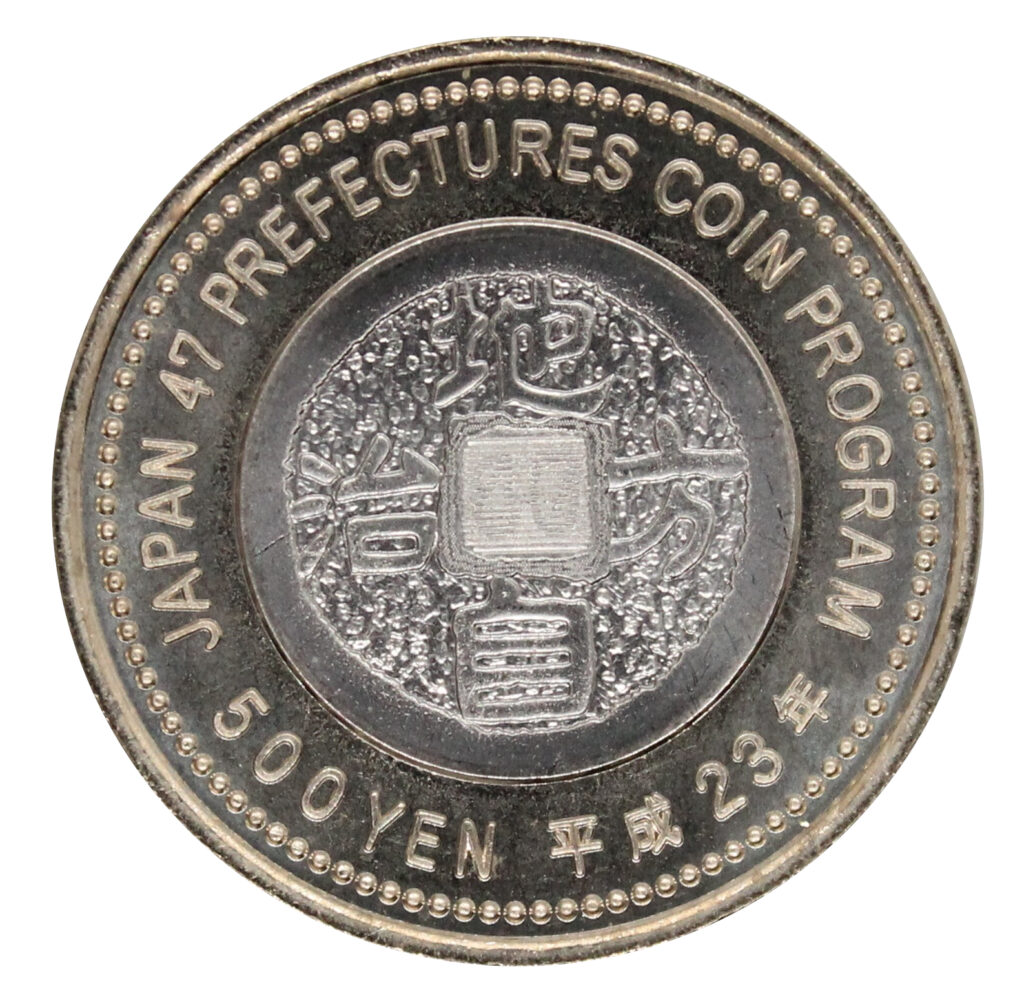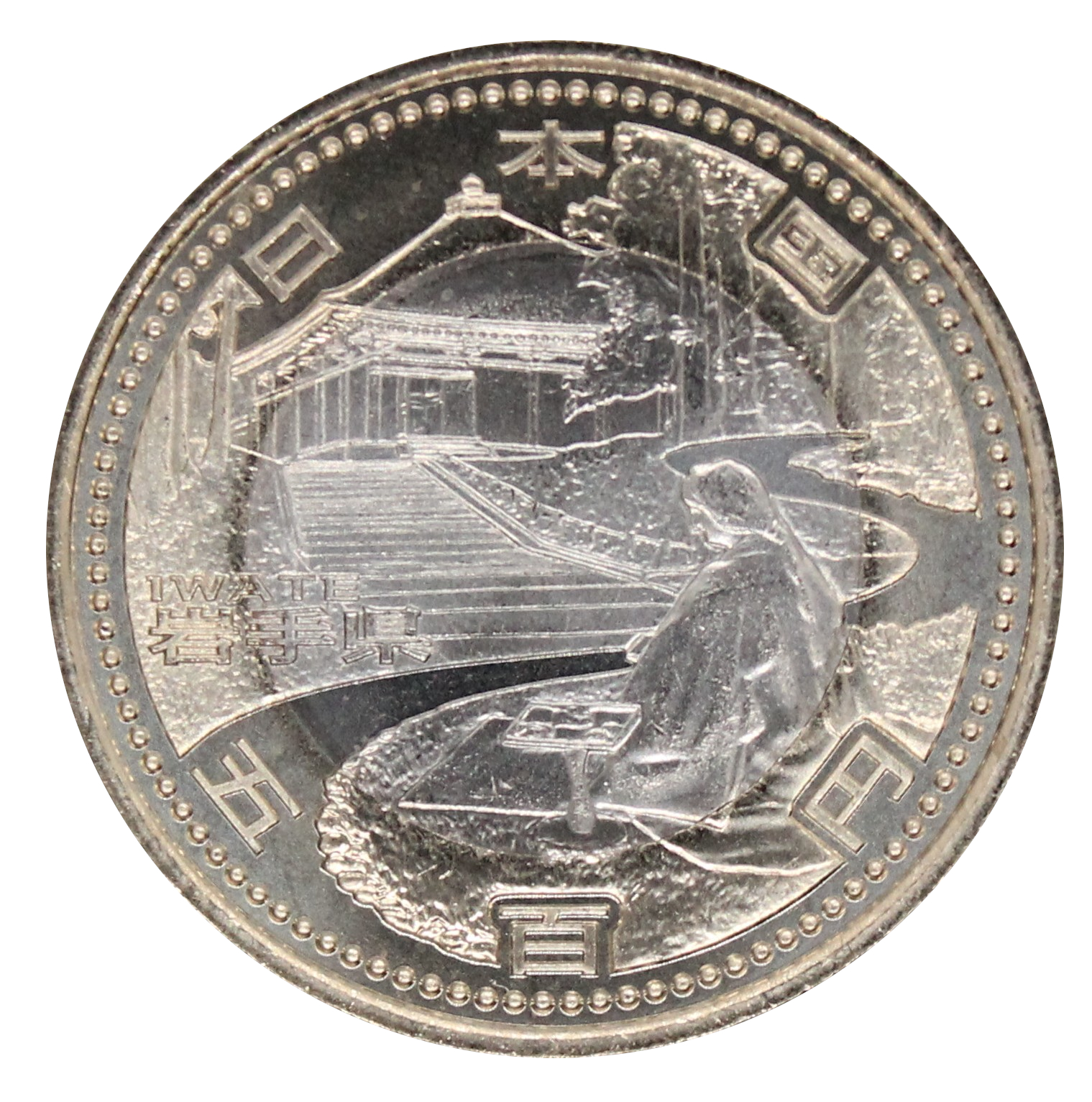

| Material | Nickel-brass, Cupronickel and Copper |
| Composition | Copper 750 Zinc 125 Nickel 125 |
| Weight | 7.1g |
| Diameter | 26.5mm |
| Year of Production | 2011 |
A 500 yen coin made to commemorate the 60th anniversary of the enforcement of the Local Autonomy Law.
There are 47 types, the same as the number of prefectures in Japan.
It is made by combining two technologies: “Cladd,” in which another type of metal plate is inserted between two metal plates, and “Bicolor,” in which another metal is placed in a disk. “Baikara Clad
There are jagged edges on the sides, and only four places are shaped differently from the rest.
The reverse side is the same.
The design imitates the coins of the Edo period.
It is written in kanji as “local Autonomy” in four characters.
The year and “JAPAN 47PREFECTURES COIN PROGRAM” are engraved.
The obverse has a different design for each prefecture.
The IWATE type depicts ”Chusonji Konjikidou New Cover Hall” ”The scene of the banquet at Mōtsūji’s Gokusui.
Chūsonji and Mōtsūji are temples located in Hiraizumi, Iwate Prefecture. Hiraizumi is a region rich in historical buildings from ancient to medieval times, and it is registered as a World Heritage site. Chūsonji and Mōtsūji are among the most famous sites within Hiraizumi’s architectural ensemble.
Mōtsūji was established in 850 and was built by the Fujiwara clan, who ruled most of the Tōhoku region, including present-day Iwate Prefecture, at that time. The “Gokusui no En” (Banquet of Gokusui(曲水)) is a festival held along the winding little liver in the garden, reenacting the lifestyle of the nobility from that era. Chūsonji, similarly constructed by the Fujiwara clan, is famous for its Konjikidō (Golden Hall,金色堂), which houses the remains of the first to four generations of the clan until their downfall. The hall shines with a golden hue and is a building worth seeing.
The motif this time is a building that was constructed to cover and protect the Konjikido, with the current building being newly built in 1965. In contrast to the golden appearance of the Konjikido inside, the rustic appearance harmonizes with the surrounding scenery.


